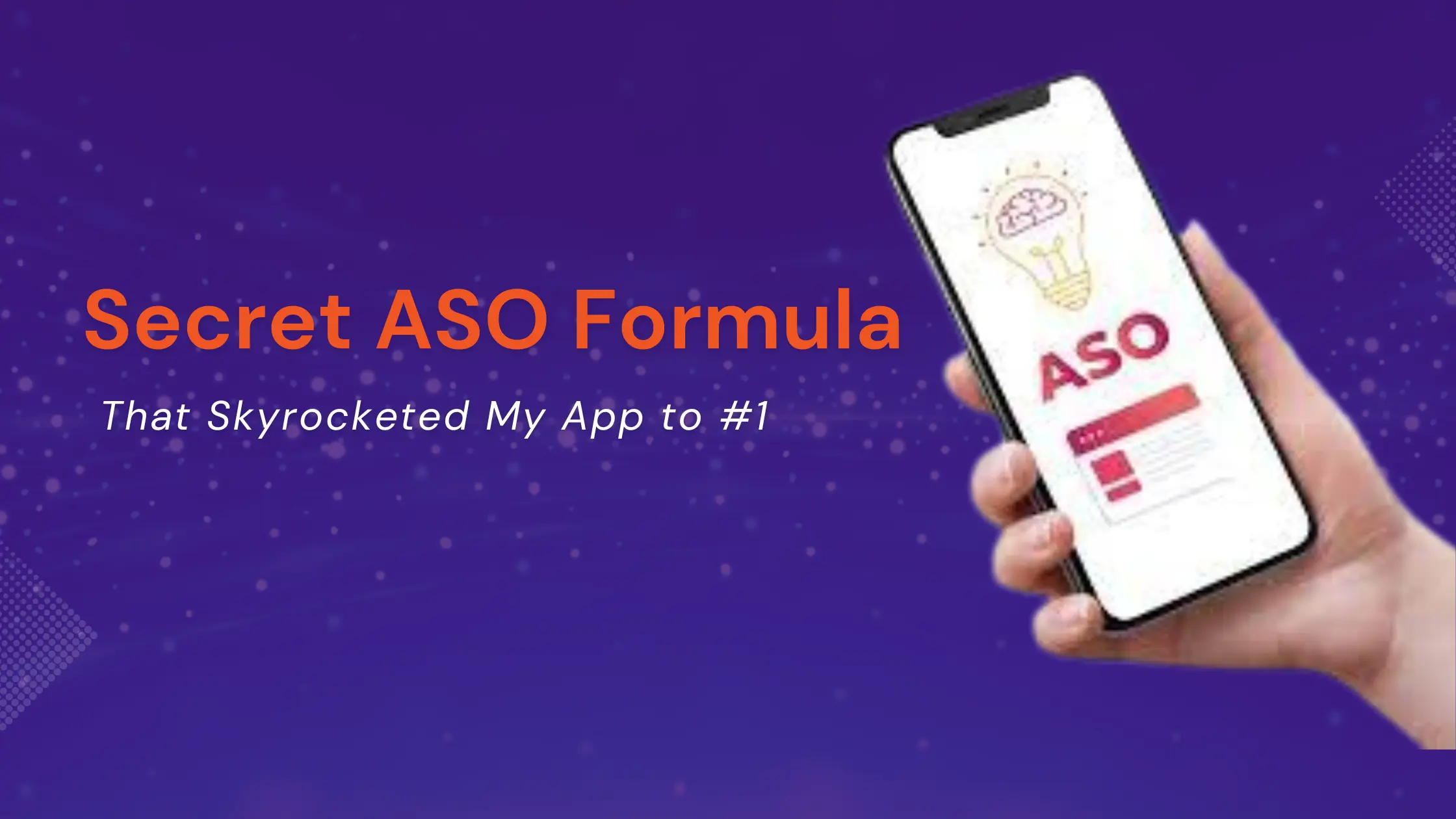The Secret ASO Formula That Skyrocketed My App to #1
When I launched my first mobile app, I thought I had nailed it. Great functionality, sleek UI, even a solid MVP that solved a real problem. But after I hit “publish,” the reality hit harder: crickets. ASO Days went by, then weeks, and my download numbers barely moved.
Sound familiar? If you’re a mobile app owner in your 20s or 30s like me, you’ve likely poured your heart into your app—only to realize that getting found on the app store is a whole different game.
What changed everything for me? App Store Optimization—ASO.
In just over a month, I went from invisible to ranking #1 in my category. Here’s the exact formula I used.
What Is ASO (and Why You Should Care)?
App Store Optimization is basically SEO for mobile apps. It’s how you improve your app’s visibility in the App Store and Google Play by optimizing various elements—your title, keywords, visuals, and more.
Why it matters? Because 70% of app downloads come from search. If you’re not showing up there, you’re missing the majority of your potential users.
Why Most Apps Don’t Rank
Let’s be real—most apps don’t optimize at all. They:
- Use generic titles
- Skip keyword research
- Leave app descriptions vague
- Upload low-quality icons or screenshots
I was guilty of all the above.
My 7-Step ASO Formula That Works
1. Keyword Research Like a Marketer
Forget guessing. I used tools like Sensor Tower, AppTweak, and MobileAction to dig up keyword gold. I looked for keywords with decent volume but low competition.
One major shift? I changed my keyword from “budget tracker” to “student budget planner”—a lower competition phrase with higher relevance to my target audience. Result? 18% jump in organic installs.
2. Write a Magnetic App Title
Your title should be clear, keyword-rich, and still sound human. I landed on:
“BudgetPal: Smart Student Budgeting”
The keyword “student budgeting” made it searchable. The name “BudgetPal” made it brandable.
I A/B tested a few variations with Google Play experiments. This one won by 11% more installs.
3. Optimize Your App Description
Think of the first three lines as your hook. Especially on Google Play where that’s all users see before clicking “Read More.”
I rewrote mine with a benefits-first focus:
“Take control of your money without spreadsheets. BudgetPal makes tracking your spending simple, fast, and fun. Designed for students by students.”
Then I used bullet points to highlight key features, and I sprinkled in related keywords naturally.
4. Visuals That Convert: Icon, Screenshots & Preview Video
Confession: I thought my first icon looked cool. Turns out, it blended into the background of every search result.
Once I switched to a bold, high-contrast design with one focal symbol, installs jumped by 12%.
Screenshots:
- I added short benefit-driven captions on each (e.g., “Track spending in 3 taps”)
- Used bright, clean designs
App Preview Video: Creating a 30-second demo showcasing the core features in action added a major boost to conversion. Plus, it gave users a feel for the app before downloading.
5. Getting Reviews (Without Being Annoying)
Reviews are social proof. But asking for them poorly can backfire.
What worked for me:
- Asking for reviews only after a positive milestone (e.g., completing a budget)
- Using native prompts that don’t interrupt the user experience
I also encouraged my early users (mostly friends) to leave honest feedback. That gave me a solid base of 50+ positive reviews in the first 2 weeks.
6. Localization: Don’t Sleep on This
I translated my metadata (title, description, keywords) into Spanish, Portuguese, and Hindi using native-speaking freelancers.
The result? My mobile app development started ranking in Brazil and India—two massive user bases I hadn’t even considered initially. This alone doubled my organic downloads.
7. Track, Tweak, Repeat
I created a simple Google Sheet where I tracked:
- Keyword rankings
- Conversion rates
- Downloads per source
I checked in weekly and made updates monthly. ASO isn’t set-it-and-forget-it—it’s a cycle.
Results: From Obscurity to #1
Before ASO:
- Ranking: Nowhere
- Downloads: 12/day
After 6 weeks:
- Ranking: #1 in “student budgeting”
- Downloads: 250+/day
- Featured in “Top Finance Apps” in 3 countries
And yes—my revenue saw a healthy bump, too.
Lessons I Wish I Knew Earlier
- A/B testing is underrated—just do it.
- First impressions matter: Your icon and title are more important than you think.
- Engage with your reviewers—it builds loyalty.
Bonus Tips
Soft Launch in Test Countries
I tested my app in Canada and New Zealand before going global. It let me iron out bugs and test ASO elements without hurting my core markets.
Seasonal Keywords
Around back-to-school season, I updated my keywords to include “college budget” and “back to school savings.” Timely updates keep you relevant.
Niche Influencer Reviews
I reached out to personal finance bloggers and student YouTubers for reviews. A single mention got me 500+ downloads in 3 days.
Final Thoughts: ASO Is the Growth Lever Most Ignore
You don’t need a massive marketing budget to grow your app. You just need the right strategy.
Focus on clarity, research, and constant testing. ASO turned my struggling app into a top-performer, and it can do the same for yours.
Want me to take a quick look at your ASO setup? Drop your app link in the comments—I’ll send you 3 personalized tips.
Good luck out there. And remember: the app store isn’t a lottery. It’s a strategy game.
For latest update – thebizmagazine

